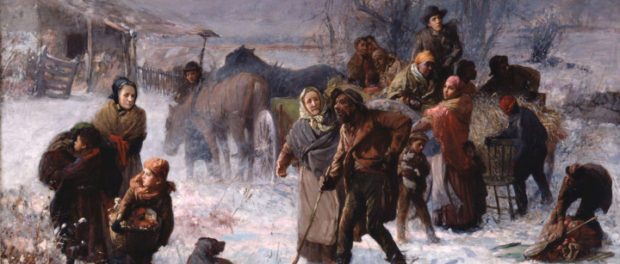1850-60: The Underground Railroad & Other Quebec Curios
Part of “Division and Resistance”, 1827-1863
The concept of the Underground Railroad had existed since the late eighteenth century but it was only until the 1830s when its name, part of a code for interested peoples to communicate with each other, began being used. Harriet Tubman, a woman born into slavery in Maryland, escaped to Canada and was largely responsible for the movement. Aided by slaves who had also escaped to freedom and white people sympathetic to the abolitionist movement, Tubman would be personally responsible for bringing 300 African Americans to freedom.
Initially, the Railroad’s route was to accompany slaves the more northern states in the United States such as New York or Pennsylvania, states known as “free states” where slaves could not be legally owned. However, in response to the southern, slave-holding states complaining about their slaves escaping to the north, Congress passed a piece of American legislation in 1850 that would further complicate the plans of the people involved with the Railroad.
The Fugitive Slave Act, signed into law by President Fillmore in September of 1850, fined public officers who did not arrest people suspected of being a runaway slave. This essentially allowed slave owners to track slaves who were attempting to escape in the northern free states as well, despite the anti-slavery laws in the north. The process to arrest a slave was as simple as a slave owner signing an affidavit and submitting it to a Federal marshal; suspected slaves were then sent back to the owner in question without a trial. This law, however, further strengthened the abolitionist movement and the sentiments of the people in the northern states were moved towards action.
While the United States would only abolish slavery with an amendment to their Constitution in 1865, as part of the British Empire, Canada was unable to participate in the slave trade as the Parliament in the United Kingdom had outlawed slavery in 1833. The Fugitive Slave Act made the Canadas, and Canada West in particular due to its location close to the northern states, a haven for slaves wanting their freedom. Final destinations included Montreal in Canada West as well as Toronto and Windsor in Canada East. The same sentiment of goodwill towards the freed slaves were not shared by all in the Canadas, however, and riots broke out by a minority who did not appreciate this “black immigration”. The abolitionist movement’s ideals, however, was largely shared by many people on both sides of the Canadas.
The Canadas would be the haven of over 30 000 African Americans that sought their freedom.






